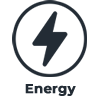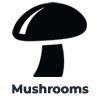1As we touched on briefly in the above section about mood, Shoden has some significant effects on our GABAergic system. GABAergic receptors often get oversimplified, and usually are only attributed to relaxation, but they play a very essential role in our brain by helping to regulate neuronal activity. GABA is known as an inhibitory neurotransmitter, meaning that it can help slow down the activity of certain parts of our brains. This can be especially useful when we are getting ready to go to sleep and we want to start slowing down our mental activity a little bit. To explore this in some more detail, lets touch on some light neuroscience!
During wakefulness, there is a signalling pathway from the preoptic area (POA) in the hypothalamus that connects to the tuberomammillary nucleus (TMN). The TMN is known as a histaminergic nucleus, meaning that this part of our brain produces histamine and sends histaminergic signals out to various parts of our brain. Histamine mainly produces wakefulness effects and thus, the TMN is a major regulator of wakefulness.
The POA sends out GABAergic afferents to the TMN, and through this pathway, outputs from the POA can regulate the activity of the TMN. During wakefulness, there is something called a ‘basal GABAergic tone’ between the POA and TMN, which allows the TMN to operate at full capacity while also ensuring that its activity stays under control. This helps keep us awake and focused! Before sleep, however, the GABAergic tone elevates in the POA which starts to dampen the activity of the TMN. This causes the wakefulness-promoting histaminergic pathways to slow down and before you know it, you are floating away into sleep! What this means is that Shoden, by promoting GABAergic activity, may help promote this GABAergic tone between the POA and TMN, thereby helping to promote sleep onset and sleep quality!










